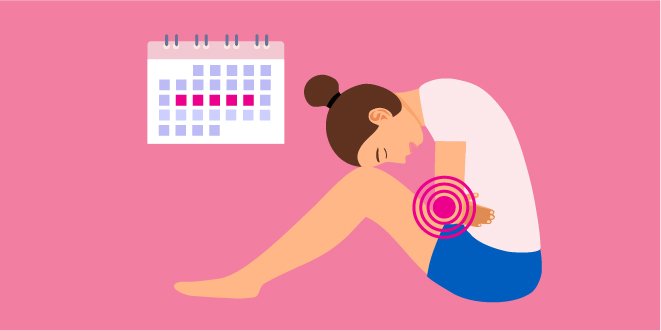While some individuals experience minimal symptoms, for others, their monthly cycle can significantly impact their quality of life and overall well-being. According to The American College of Obstetrics (ACOG) and Gynecology, more than half of menstruating individuals experience some form of pain during their period lasting for at least one to two days each month.
The medical term for period pain is dysmenorrhea, which is divided into two types: primary and secondary. Understanding the distinctions between these types can help you identify the source of your pain, take appropriate action, and advocate for yourself in medical settings. Learn more about self-advocacy here.
What sets primary and secondary dysmenorrhea apart? Let’s delve into it.
Symptoms of Dysmenorrhea
While cramps are commonly associated with period pain, dysmenorrhea can encompass a range of symptoms beyond just cramping. Painful periods may manifest with additional symptoms such as:
- Pelvic pain
- Lower back pain
- Cramping or pain in the lower abdomen
- Nausea
- Vomiting
- Headaches
- Dizziness
- Pain radiating down the legs
- Fatigue
- Fainting
Enduring intense pain and discomfort for several days every month can have a significant impact on mental health as well. Those with dysmenorrhea may also experience symptoms of PMS or PMDD, alongside feelings of anxiety or hopelessness due to recurring monthly pain.
Primary Dysmenorrhea
Primary dysmenorrhea refers to cramps that precede or occur during menstruation.
These cramps, induced by prostaglandins – hormone-like substances – contribute to the contraction of muscles and blood vessels in the uterus during menstrual cycles. While higher prostaglandin levels at the onset of a period may intensify pain, it typically diminishes after a few days.
Primary dysmenorrhea generally initiates within six to twelve months of menarche (onset of menstruation during adolescence) and often improves with age.
Secondary Dysmenorrhea
Secondary dysmenorrhea, on the other hand, stems from reproductive health disorders, pelvic pathology, or other medical conditions. This form of period pain may commence a few days prior to menstruation, exacerbate throughout the cycle, and persist even after menstruation ceases.
One common cause of secondary dysmenorrhea is endometriosis, a condition marked by severe period pain. Other potential causes include fibroids, congenital defects, tumors, infections, or polyps in the pelvic region, as well as conditions like adenomyosis and Polycystic Ovary Syndrome (PCOS).
While less common, adolescents may experience secondary dysmenorrhea, with endometriosis diagnosis posing challenges due to differences in lesion appearance compared to adults.
Treating Dysmenorrhea
Treatment for dysmenorrhea varies based on the underlying cause and whether it is primary or secondary. Your OB-GYN is likely to conduct a pelvic exam, followed by blood tests and possibly an ultrasound to assess the situation.
For cases requiring further evaluation, a laparoscopy, a minimally invasive procedure involving a small incision near the belly button to examine the abdomen internally using a laparoscope, may be recommended.
Primary dysmenorrhea can often be managed with over-the-counter medications, heat therapy, dietary/lifestyle adjustments, and supplements like magnesium.
On the other hand, treating secondary dysmenorrhea is more complex due to various underlying disorders. Treatment may involve medications, hormonal birth control, surgical interventions, lifestyle modifications, or holistic approaches like acupuncture or naturopathy.
Advocating for Yourself
While period pain is common, it should not be considered a normal part of life. Seeking understanding and supportive medical providers is crucial, though unfortunately, not always guaranteed. Self-advocacy plays a vital role in gaining access to necessary tests, scans, and treatments, especially in reproductive health care where autonomy is often disregarded.
If you are grappling with period pain or seeking enhanced healthcare, here are some tips to strengthen your self-advocacy:
- Monitor symptoms, energy levels, and related factors for better insight.
- Educate yourself in advance to understand available options.
- Prepare a list of questions to ensure all concerns are addressed.
- Speak up for the care you deserve, even if that means requesting a different provider.
Everyone deserves to feel comfortable and empowered in their bodies, even during menstruation. If period pain is significantly impacting your life, consider exploring available options for relief.





Leave a Comment